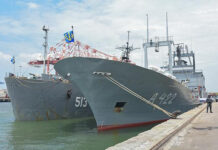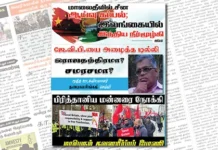Sri Lanka’s economy (LKGDP=ECI) shrank 11.5% in the first three months of 2023, official data showed on Thursday, as the country remained in the grip of its worst financial crisis in decades.
The downturn was driven by high inflation and high interest rates, the rising cost of components, as well as restrictions on imports and lower earnings from apparel exports, Census and Statistics Department said in a statement.
The agriculture sector grew 0.8% from a year earlier, while output from industries contracted 23.4% and services dropped 5%, the department said.
Sri Lanka’s central bank projects that GDP will shrink by 2% this year while the International Monetary Fund (IMF) estimates a contraction of 3%.
“This is a slightly bigger contraction (in the first quarter) than our expectations of 9%-10%. But we project growth to turn back to positive in the second half of the year,” said Shehan Cooray, head of research at Acuity Stockbrokers.
The central bank slashed interest rates by 250 basis points earlier this month, the first reduction in three years, as it shifts focus towards stimulating the economy.
“A pickup in private sector credit will be a growth positive and credit growth will increase over the next six to nine months,” Cooray added.
Sri Lanka’s economy contracted by a record 7.8% last year after its foreign exchange reserves hit record lows, plunging the island into the worst financial crisis since it gained Independence from the British in 1948.
The country started to see signs of an economic recovery after it secured a $2.9 billion bailout from the IMF in March, and on improved dollar inflows and somewhat reduced inflation.
But Sri Lanka still needs to complete debt restructuring talks by September in time for the first IMF review.
Reuters.





